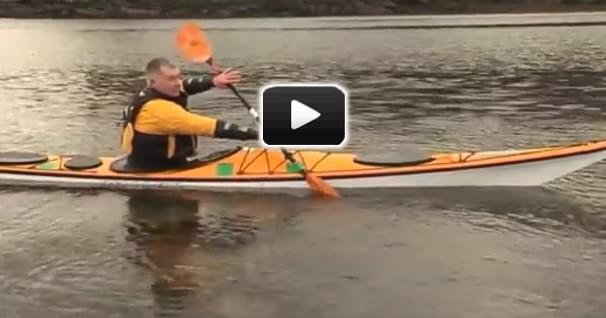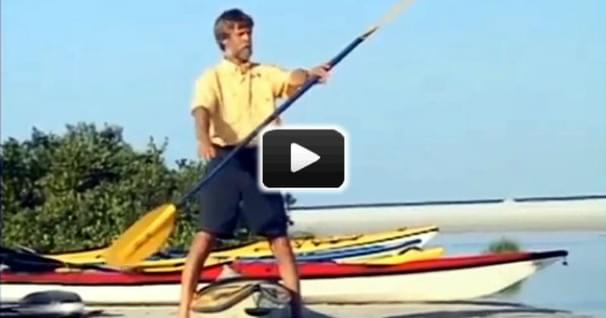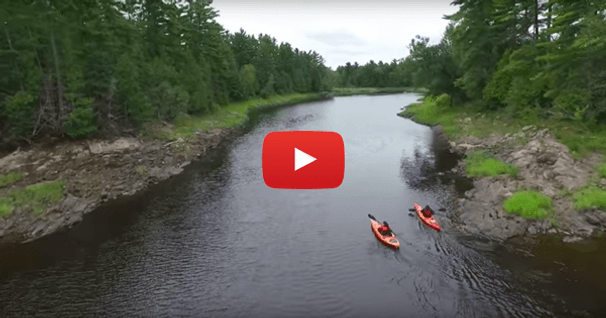The Ultimate Forward Stroke for All Kayakers
For obvious reasons, the forward stroke is the most important stroke to learn. But you don't need to have good technique to get a kayak moving. But by developing good technique, you'll be able to paddle more efficiently, more effectively, and more comfortably.
In its simplest form, the forward stroke involves planting a paddle blade at your toes and pulling it through the water to your hip, where the stroke ends and the next stroke begins. But we are going to look at the stroke in a bit more depth, by breaking it down into three parts. The catch, the rotation, and the recovery.
The catch is the part of the stroke where you place your paddle blade in the water. Sitting up straight with a relaxed grip on your paddle, reach to your toes and plant your blade fully in the water. This reach shouldn't just involve your arms, it should involve your arms and shoulders. Reaching with the shoulders means twisting your upper body at the waist. So let's say I'm taking a stroke on the left side of the kayak, I'm going to reach with my left shoulder. This effectively turns my body to the right or winds up my body. And this is commonly referred to as torso rotation. It's how you get the large core muscles involved with your strokes so you're not just using your arms. You get a lot more power that way.
With your body wound up, plant your blade in the water so that it's completely submerged. Once it's planted, you'll pull in your paddle and unwind your upper body to drive your boat forward. Your body is like an elastic band in that, once it's wound up, you have a lot of energy to use. And rotation refers to the way you use that energy to power forward stroke. As we just looked at, your body should be wound up and your paddle firmly planted during the catch phase. You'll now pull on your paddle and drive your kayak forward using as much of your large torso muscles as possible. This will probably surprise you to hear, but your arms are really just a supplement to the power your torso rotation provides. Now if you don't believe it, try paddling with your arms locked straight. It's not gonna be comfortable to do this, and you're not gonna want to do for long. But it shows you that you can really get your kayak moving without using your arms at all.
Now that you're using your torso rotation. Let's take a quick look at what the rest of your body will be doing. As you pull on your paddle blade, keep your elbows bent and low. The range of motion of your arms is actually quite small since your torso will be doing the bulk of the work. As a general rule, the more vertical your paddle shaft is while taking a forward stroke, the more forward power you're getting from it. These aggressive forward strokes are great strokes when you're in a hurry, but they're also more tiring. For general paddling purposes, you'll want to drop your top hand to shoulder or chest level. This less aggressive stroke is commonly referred to as a low angle touring stroke and can be kept up for much longer.
Even though your upper body does most of the work, your lower body can still be involved. And the way you do this, is by pushing on the foot peg on the same side that you're taking the stroke on.
The recovery is the point at which your forward stroke ends and the blade gets removed from the water. And this happens when your stroke reaches your hip. At this point, you'll simply slice your paddle up and out of the water sideways and then get ready for the next stroke by planting the other blade deeply into the water.
Now that you have all the pieces for an efficient and powerful forward stroke, try to put them all together as smoothly as possible, while keeping your boat as quiet as you can. A quiet boat has minimal bob from side to side or up and down and will glide through the water most efficiently.
Well, I hope this video helps you with your forward paddling. One thing I wanna mention is that having high quality paddling gear really does make a difference, both with your paddling technique and with your enjoyment on the water. And so, I'd highly recommend getting a top quality paddle, like those from Aqua-Bound.
Related Articles
When we're forward paddling we want to be as efficient as possible and one way to do that is to make…
The forward stroke is the most important thing you do when you're paddling. It's what you do most often.…
The three golden rules are a set of rules that, when followed, will let you paddle the most efficiently…


